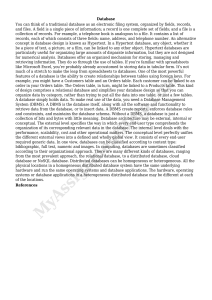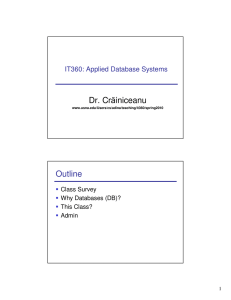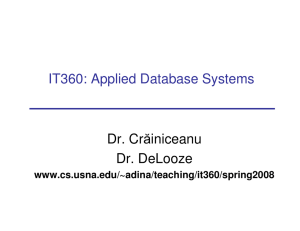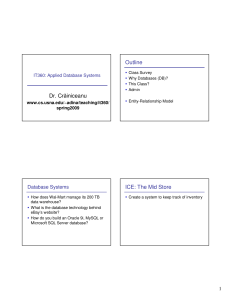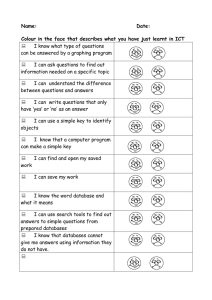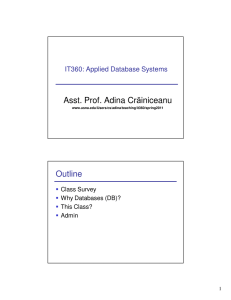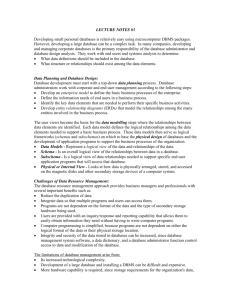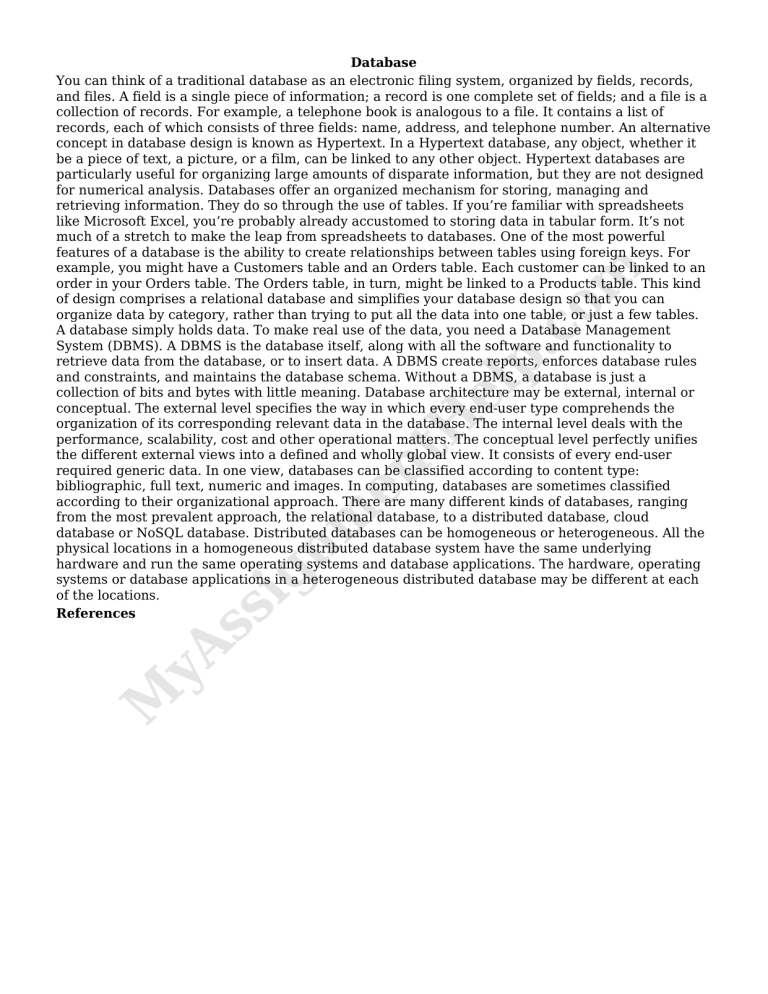
M yA ss ig nm en t H el p. c om Database You can think of a traditional database as an electronic filing system, organized by fields, records, and files. A field is a single piece of information; a record is one complete set of fields; and a file is a collection of records. For example, a telephone book is analogous to a file. It contains a list of records, each of which consists of three fields: name, address, and telephone number. An alternative concept in database design is known as Hypertext. In a Hypertext database, any object, whether it be a piece of text, a picture, or a film, can be linked to any other object. Hypertext databases are particularly useful for organizing large amounts of disparate information, but they are not designed for numerical analysis. Databases offer an organized mechanism for storing, managing and retrieving information. They do so through the use of tables. If you’re familiar with spreadsheets like Microsoft Excel, you’re probably already accustomed to storing data in tabular form. It’s not much of a stretch to make the leap from spreadsheets to databases. One of the most powerful features of a database is the ability to create relationships between tables using foreign keys. For example, you might have a Customers table and an Orders table. Each customer can be linked to an order in your Orders table. The Orders table, in turn, might be linked to a Products table. This kind of design comprises a relational database and simplifies your database design so that you can organize data by category, rather than trying to put all the data into one table, or just a few tables. A database simply holds data. To make real use of the data, you need a Database Management System (DBMS). A DBMS is the database itself, along with all the software and functionality to retrieve data from the database, or to insert data. A DBMS create reports, enforces database rules and constraints, and maintains the database schema. Without a DBMS, a database is just a collection of bits and bytes with little meaning. Database architecture may be external, internal or conceptual. The external level specifies the way in which every end-user type comprehends the organization of its corresponding relevant data in the database. The internal level deals with the performance, scalability, cost and other operational matters. The conceptual level perfectly unifies the different external views into a defined and wholly global view. It consists of every end-user required generic data. In one view, databases can be classified according to content type: bibliographic, full text, numeric and images. In computing, databases are sometimes classified according to their organizational approach. There are many different kinds of databases, ranging from the most prevalent approach, the relational database, to a distributed database, cloud database or NoSQL database. Distributed databases can be homogeneous or heterogeneous. All the physical locations in a homogeneous distributed database system have the same underlying hardware and run the same operating systems and database applications. The hardware, operating systems or database applications in a heterogeneous distributed database may be different at each of the locations. References
